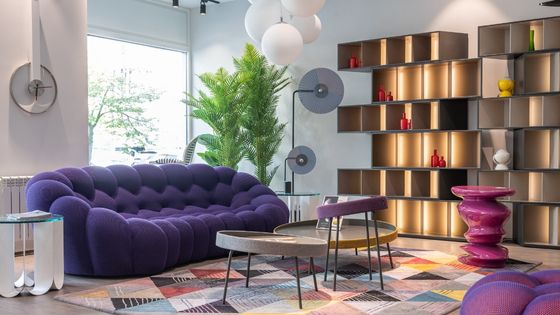One of the most fascinating and weirdly one of the least spoken about in fashion and design is the surrealism movement. There is nothing more impactful and eye-catching than interior design with a surreal flair.
So, if this sounds like something you may want to introduce into your own home, then continue reading to discover everything you need to know about surrealism in interior design and home décor.
What Actually is Surrealism?
The simple way to describe the theory of surrealism, both with regards to art as well as literature and interior design, is that surrealism focuses on taking apart a ‘normal’, traditional item, concept or personality, separating all the pieces and then putting them back together again but in a different position.
A Brief History of Surrealism in Interior Design
The use of surrealism in home décor and interior design has never been more popular or relevant than it is today. This is mainly due to society becoming a giant melting pot of different religious, philosophical and political beliefs. Everything has the chance to merge together in ways previously unthought of.
Creativity and individual thinking are both at the true heart of surrealist design and décor and it is highly likely that, as someone who is considering this theme, you are somewhat of a freethinker.
The concept of surrealist thinking itself was largely inspired and indeed, initiated, by Karl Marx and Sigmund Freud at the beginning of the 1890s, with the surrealist art movement following suit, with painters such as Salvador Dali popularising the concept even more.
The Key Defining Elements of Surrealist Design
Following are the three key elements characteristic of a room, a space or indeed an entire home designed along the principal of surrealism; Colour, Contrast & Creativity.
1. An Explosion of Colour
One of the main, signature attributes of a surrealistic design theme is the veritable explosion of color to attack your senses as you enter the room.
Think dramatic lines, the same pattern but in different colors, shades, and tones, and a vibrancy unrivaled by any other interior design movement.
2. Contrasting Fabrics, Textures & Depths
Just as the colors used in surrealism are as varied as they possibly can be and moreover, often clashing deliberately, so too are the different textiles, fabrics, and soft furnishings used.
Check out Hampstead interior design experts for powerful and stunning examples of statement sofas and tables that will epitomize your desire to show visitors your eclectic and creative personal style to your home.
3. Let Your Mind Go Wild!
Finally, the third main element of surrealistic interior design is the very reason that, after reading this article, you may still seem slightly confused or conflicted about what surrealism is and that is the whole point of its existence.
Changing the way you think, your personal view of the world, your long-upheld beliefs (either from environmental or genetic influences) and your behaviors in different situations is at the heart of the surrealism movement. The point is to challenge the preconceived.

